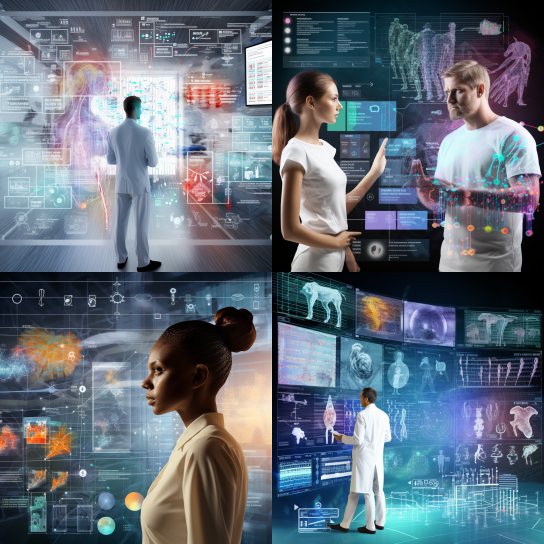Know more about Machine learning, statistics, data science,robotics, and AI
Machine learning, statistics, data science, robotics, and AI
Know more about Machine learning, statistics, data science,robotics, and AI
Machine learning, statistics, data science, robotics, and AI
Machine learning
Machine learning is closely related to the fields of statistics and data science, which provide a range of tools and methods for data analysis and inference from data. It is also related to robotics and intelligent automation. These fields help shape the context in which people relate to many machine learning applications, and inform the opportunities and challenges associated with it. Machine learning also supports progress in these fields, as an underlying technology for both AI and data science.
Real "AI Buzz" | AI Updates | Blogs | Education
Data science and statistics
At its most basic level, machine learning involves computers processing a large amount of data to predict outcomes. This process of data handling and prediction has strong links to the overlapping fields of data science and statistics, which seek to extract insights from data.
Statistical approaches can inform how machine learning systems deal with probabilities or uncertainty in decision-making, while processing and analysis techniques from data science feed into machine learning. However, both of these disciplines also include areas of study which are not concerned with creating algorithms that can learn from data to make predictions or decisions. While many core concepts in machine learning have their roots in data science and statistics, some of its advanced analytical capabilities do not naturally overlap with these disciplines.
Artificial intelligence
The term ‘artificial intelligence’ lacks a broadly agreed definition, but has variously been described as:
“activities that we associate with human thinking, activities such as decision-making, problem solving, learning…” (Bellman, 1978)
“The art of creating machines that perform functions that require intelligence when performed by people.” (Kurzweil, 1990) • “The study of the computations that make it possible to perceive, reason, and act.” (Winston, 1992)
“The branch of computer science that is concerned with the automation of intelligent behaviour.” (Luger and Stubblefield, 1993)
“that activity devoted to making machines intelligent, and intelligence is that quality that enables an entity to function appropriately and with foresight in its environment.”
Informally, these definitions relate to systems that think like humans, act like humans, think rationally, or act rationally.
Machine learning is a method that can help achieve ‘narrow AI’, in the sense that many machine learning systems can learn to carry out specific functions ‘intelligently’. However, these specific competencies do not match the broad suite of capabilities demonstrated by people.
Robotics
The term ‘robot’ usually conjures the idea of something that lives in the physical world. It covers a range of different applications, whose software sophistication ranges from zero, in the case of automata, to high, when representing intelligent systems.
In the context of machine learning and AI, a ‘robot’ typically refers to the embodied form of AI; robots are physical agents that act in the real world. These physical manifestations might have sensory inputs and abilities powered by machine learning. The field of robotics has also made advances in recent years, as a result of improvements in sensor technologies and materials. As a result, and combined with advances in machine learning, robotic systems contribute to applications such as autonomous vehicles and drones. Potential applications can also be found in areas such as assisted living or city management.
These further advances will draw from capabilities created by machine learning, such as computer vision, language processing, and human-machine interaction. A further development in the field of machine learning relates to the increased use of virtual agents, or ‘bots’.
The term ‘bot’ is sometimes used to refer to an autonomous agent deployed in software. Such agents may not have a physical manifestation, but may operate autonomously in the virtual world of the internet.
Read More









Leave a Reply